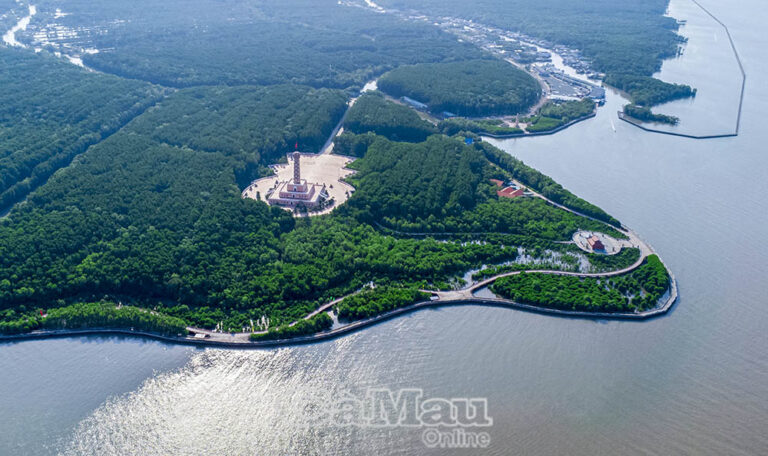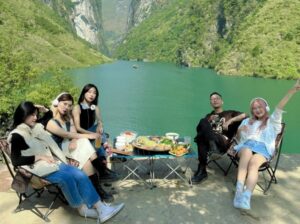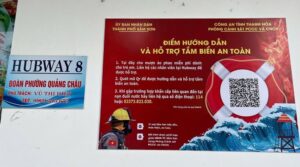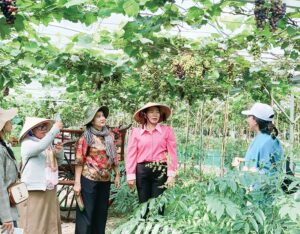Tram Chim National Park in the Mekong Delta, the 2,000th Ramsar site globally, is a wetland site designated to be of international importance under the Ramsar Convention.

In the high-rise water season between August and November, the national park turns picturesque. The blue sky is reflected in the water and this vast blue is embellished by lotuses, lilies, and melaleuca flowers.
35 kilometers from Cao Lanh city, Dong Thap province, the 7,300-hectare Tram Chim National Park spans five communes and Tram Chim township. This is the habitat of 130 plants and 200 wetland birds, including white storks and mallards.
Eight years ago, Tram Chim National Park was recognized as the 2,000th Ramsar site globally, and the fourth site in Vietnam to receive the honor.
Nguyen Van Vui, a tour guide at the national park, says, “The Ramsar Convention was created to protect wetlands and the precious birds living there. Tram Chim National Park was honored for meeting all the standards. It’s a natural forest which also protects over 150 species of freshwater fish.”
In the dry season, between the 5th and the 12th lunar month, canoes glide through the canals, taking visitors around to admire the peaceful landscape of Tram Chim, where the grass fields and the breezes are soothing to one’s soul.
“Capujut trees cover approximately 3,000 hectares of Tram Chim National Park. The rest is covered with water chestnut, eleocharis, ferns, and flowers,” the guide reveals.
In January, when the alum content is high, the water is clear, and photosynthesis is strong, thin purple three-petal flowers cover the wavy waters of Tram Chim National Park.
“The fragile purple flowers bloom on the water for several kilometers. They are in full swing deep in the national park for 30 to 40 days,” notes Vui.
Sitting in a canoe creeping through the wetlands, visitors are mesmerized by darting birds, quickly hiding, then quickly showing themselves. Sometimes they may encounter just a few white storks in the trees.
Sometimes, a flock of hundreds of mallards may spread their wings in a red sunset sky. Such a marvelous scene is a great pay-off for those who wait patiently for the sun to go down.
If visitors wake up early enough, they might see clusters of birds on top of the trees, preening their feathers before they scatter in search of food. Such gifts of nature are once in a lifetime sights for many.
“You can watch the storks hunt for food. Even when a fish is in their sight, they don’t attack immediately but wait patiently until the fish thinks there is no threat and lets its guard down. A stork stands very still and doesn’t move," says Vui.
"When the fish swims to its feet, the bird darts its head down to catch the fish, but doesn’t eat the fish right away. Instead, it carries the live fish to a small pond deep in the wetland where the storks pile up food to feed the flock in the winter when the weather is harsh,” Vui adds.
Some visitors are lucky enough to see a red-crowned crane, which is listed in Vietnam’s red book of endangered species.
“In the dry season, water chestnut is the favorite food of the red-crowned cranes. These birds are extremely faithful. If one individual of a couple dies, its mate will go on a hunger strike until it, too, dies. It will not accept a new mate."
"A female red-crowned crane lays only two eggs, and only one of the two babies that hatch from these eggs will be raised by the parents. That’s why the two little cranes fight each other for the food they need to survive. Only the stronger one will live for very long,” Vui also reveals.
Tram Chim National Park is divided into five sub-regions. Tourism activities are allowed in only two of the five.
The other three sub-regions serve as a breeding ground for birds, a preservation zone for fish species, and a feeding ground for red-crowned cranes, who migrate when the water is high and return in the dry season.
















